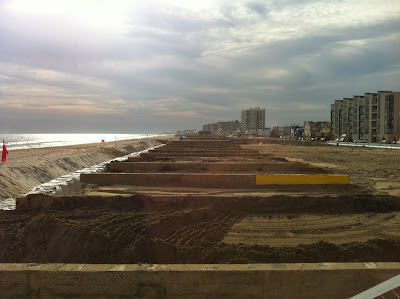Sometimes, change takes a really long time.
Other times, a shift can occur in an instant.
Aloha Washington surfers, recreational users, and coastal residents. My name is Joel Carben and this is my first post as Washington Policy Manager for Surfrider Foundation. I would like to give special thanks to Jody Kennedy for all the amazing work she did for our marine ecosystems during her tenure. We have a great team here at Surfrider WA and some world class natural resources in our backyard.
This blog will normally be a place to post Washington Policy updates but I hope to also weave in some stories from my experiences traveling to coasts around the globe and some geeky updates on science and technology. But for my first post, I would like to share a piece of my past...
 |
| Eastern Long Island, New York - Fishing for waves |
I recently returned from a trip to
Long Island, New York, the place where both my wife and I grew up, her in Sag Harbor and I on the LI Sound in Centerport.
The trip was significant for two reasons. First it was the initial time many of our family and friends, including both our parents, would meet their new 6-month year old grand-daughter. There is something amazing about grandparents meeting their grandchildren that is magical, the uniting of multiple generations through a common thread and family history.
But just as important was the fact that this was our first trip since
Hurricane Sandy destroyed many of our friend's homes.
 |
| Rockaway Beach, NYC - Post-Sandy boardwalk |
Nearly a year ago a massive hurricane surged landward into most of the Mid-Atlantic coast from Washington, D.C., to Maine, bringing
waves, flooding (both on the coast and inland), storm surge, heavy rains and wind, and most of all, unparalleled destruction to the entire coast. Wastewater treatment systems dumped raw sewage into the harbor and bays for weeks and electricity did not return to some for 6-8 weeks.
The hardest hit areas of the Rockaways, Long Beach, Staten Island and northern New Jersey, all suffered unbelievable damage. Basic essentials such as water and electricity were nowhere to be found. The entire subway system crossing Jamaica Bay was out of commission.
And then, within a few days, a shift occurred. Residents and relief workers leapt into action, as if pulled by the vacuum left behind by Sandy. Whatever the force, a group led by five surfers, took action to provide relief through the installation of solar panels at community center. Within a week,
Power Rockaways Resilience, had one community center fully outfitted with power generating panels. Within two weeks, the group had 4 community centers up and running, charging everything from lanterns to cell phones to work center lights so workers could work in the evening.
 |
| Powering Rockaways Reslience - Community center |
Within one month, the entire coastal community of Rockaway would have access to these solar powered resiliency centers. Within one month, a community with no power had implemented an entire new system for providing electrical resources during times of emergency (these centers run to this day).
Further up the New York Harbor, a project that was also hit hard by Sandy but was designed to absorb bigger waves, higher tides, and increase the resilience of the inner harbor, was nearly ten years in the making. Around 2000,
Brooklyn Bridge Park, gained momentum to become a Central Park for Brooklyn's Waterfront. Many groups started the long-process of planning, fundraising, and designing this massive project.
 |
| Brooklyn Bridge Park - Public access and resilient buffer |
Fast forward to 2013, Brooklyn Bridge Park (BBP) is now a reality, is one of my favorite professional experiences to date. For several years we worked out of an three-hundred year old building with nothing but old derelict shipping piers around us. But a dedicated group of community members worked together to create an amazing resource for millions to enjoy. Today BBP is still under construction but the vision is quickly going from long-term planning to short-term programming, including playgrounds, piers with public space, and restored habitat.
Much of the vision for BBP was to support public access. But as we learned in Sandy, building a
resilient coast with natural buffers can provide immediate relief during large-storms and higher than normal tides. The overall impact of the park, while a long winding journey, was to accomplish both.
My work over the next year will be to assist Washington surfers, recreational users, and residents to engage in similar, once in a lifetime process,
Marine Spatial Planning. Much like the progress made at BBP, this will at times be a lengthy process that requires a long-term investment. But if the cases of Hurricane Sandy and Brooklyn Bridge Park tell us anything, it's that change can be quick (especially if unanticipated), but real long-term positive change takes hard work, dedication, and a really good team (which I know we have here in WA).
Sometimes, change takes a really long time.
 |
| Long Island - Enjoying the beach |
To Protect and Surf,
Joel






